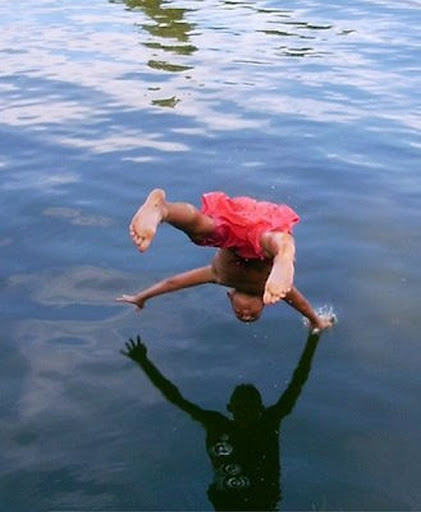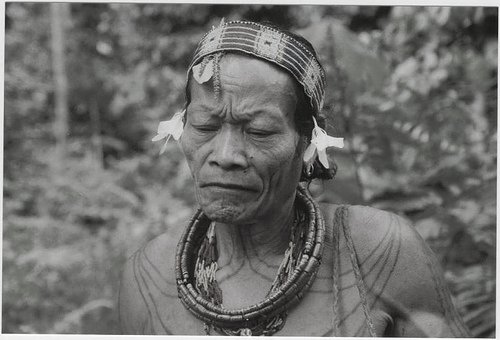
Jump – Paul Donker Duyvis
Every human being has a need to jump into the unknown. Some people do it, some people don't. Fear for the unknown. Fear the other part of our instinct is what stops us.
We have a strong need to discover.
To go further than our father. To go more West, to go more East ...
Discover the unknown sea, the unknown forest, the unknown desert, the unknown island.
The Island stands for our desire, for mystery, isolation, safety and paradise.
All things that humans lack in daily life.
The treasure is always hidden on the Island.
An island is a piece of land that is surrounded by water.
The Island is inhabited by people who want to escape the turmoil of the modern cities of the mainland with quickly changing lifestyles, cultures, rigid ethics and aesthetics. The inhabitant of Islands are often sincere keepers of traditions, myths, legends. Usually they live moderately.
An amazing example was the discovery of a famous book - The Edda - the Icelandic medieval manuscript Codex Regius ('The King's Manuscript'). The Edda kept the forgotten stories of Northern European mythology and Germanic heroic legends. The Christian Church and fundamentalist missionaries had done their work properly. Almost all the cultural heritage of pre-Christian wisdom, science,culture, religion, literature, music, dance and art was wiped out. A whole continent brainwashed completely. The earth became flat in every sense.
Thanks to the remoteness of the island Iceland we have a bit of our ancestors memories back.
A similar thing happened in Indonesia where radicals of the dominant Islamic religion are still wiping out animistic cultures, shamanistic rituals, languages, music and so on. Indonesia was a melting pot of of many islands, religions, languages and cultures: In the Jungle since pre-historic times: animism At the sea side and harbour places Hinduism, Buddhism and later Islam and the Christian religion was introduced by sailors from India.
Bali is the most famous Indonesian Island for tourists. Because of its remoteness Bali is still the only place in Indonesia that is not Islamic. It kept the richness of the Hindu culture and religion, mixed with local animistic traditions.

Old Mentawei man with traditional Tatto
Another example are the remote Mentawai Islands, an Ethnographic Wonderland. The Mentawai Islands form a chain of seventy islands off the western coast of Sumatra in Indonesia. Siberut (4,030 km²) is the largest of these islands. The inhabitants live a semi-nomadic hunter-gatherer lifestyle in the coastal and rainforest environments of the islands. The people are characterised by their heavy spirituality, body art and their tendency to sharpen their teeth, to make them even more beautiful.
After Indonesian independence, Catholic Italian missionaries established a presence here. The first thing they did was to 'dress' them and make them feel
guilty about their nakedness. Post-independence government policies relocated the indigenous population into villages, in contrast to their traditional dispersed house groups (uma), with the aim of promoting "development". Cultural tourism started to develop in the late 1980s, and when in the mid-1990s world-class waves were discovered by some Australian surfers, surfing tourism started to develop....
Indonesia promised to protect the unique culture of the Mantawei in Siberut, but with the exception of "Ilmu", the equipment of the Sikerei [shaman], such as the tattoos and the kabit ["loin cloth"] they wear. "This we don't need. This we must get rid of, because it is getting in the way of development." ... "The kabit is just a symbol of poverty; the tattoo is a mark of enmity. We don't need such things now." ...

Mentawei men in a traditional greeting (1895)
Let's jump!
Touch the ground, touch the surface of the water. Feel the earth.
Listen to the frog Chorus! Listen to the singing Fishermen, when they pull the nets, before it is too late. To Jump is a basic need. Have no fear. Forget your narrow aesthetic, political, philosophical concept.
Enjoy! Play! Find new joy for Art, joy for each other...
The jump is a symbol of overcoming fear and is an attempt to become open minded and tolerant. To encounter the unknown and preserve the variety that is still around us. Art(9DH) is about to touch the New and the Old gently!
Art is about respect. Respect for nature, the base of everything, respect for variety
in culture, art, philosophy and religion. Art is about relativation.About concentration and stimulation.
Paul Donker Duyvis
Amsterdam, march 2009
*: Mentawai.org
*: Nine Dragon Heads 2009 South Korea
*: Nine Dragon Heads 2009 Concept Jump to the Island
*: Home pddstudio / Paul Donker Duyvis

Geen opmerkingen:
Een reactie posten